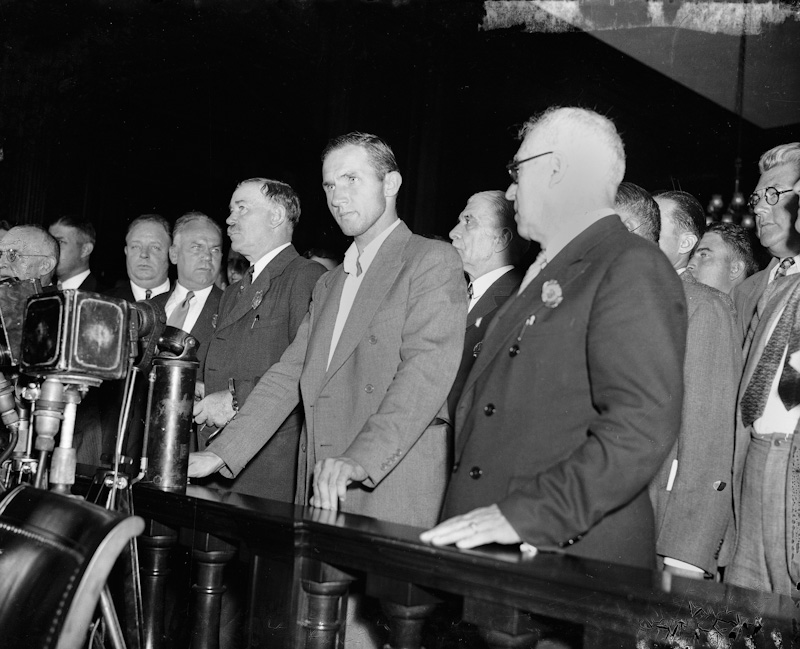Unpacking the Cyntec vs. Chilisin Patent Infringement Appeal Case | Whitcomb Selinsky, PC
In this patent infringement lawsuit, Cyntec Company, Ltd. filed a case against Chilisin Electronics Corp., claiming they infringed on specific claims of Cyntec’s U.S. Patent Nos. 8,922,312 and 9,481,037 in violation of Patent Law. The district court initially ruled in favor of Cyntec, finding the asserted claims not obvious and later the jury determined that Chilisin did infringe on these claims, awarding full damages as requested by Cyntec. Chilisin appealed the district court’s decisions on obviousness, infringement, and damages issues, while also challenging the exclusion of Cyntec’s damages expert testimony.
The Patents At Issue
The ‘312 patent and the ‘037 patent focus on molded chokes and their manufacturing process. A choke is an essential component in electronics that helps eliminate unwanted signals. Molded chokes are created by placing coiled conducting wire in a mold filled with magnetic powders and adhesive, then compressing and heating the mold to solidify the adhesive.
These patents address the challenges of mixing magnetic powders using effective annealing, a heating method that reduces core loss, strain, and increases permeability. High annealing temperatures have led to issues like melting wire insulation and risking short circuits. To tackle these problems, the patents propose a solution involving two types of magnetic powders – one larger and harder than the other. This unique mix allows the integral magnetic body to form at a lower temperature than the insulation’s melting point.
In essence, the ‘312 patent describes an electronic device incorporating different magnetic powders and a conducting wire to create an integral magnetic body without requiring high annealing temperatures.
Procedural History
Cyntec filed a lawsuit against Chilisin for patent infringement, claiming that Chilisin deliberately manufactured and sold infringing chokes. At issue was the disputed claim limitation in the following text from the ‘312 patent:
wherein by means of the first hardness difference of the first magnetic powder and the second magnetic powder, the mixture of the first magnetic powder and the second magnetic powder and the conducting wire buried therein are combined to form an integral magnetic body at a temperature lower than the melting point of the insulating encapsulant.
The district court first interpreted the term “by means of” as having a straightforward meaning that did not need further explanation. During the summary judgment, Chilisin argued that “by means of” meant the formation temperature must be influenced by a hardness difference between two magnetic powders. However, the court found that this interpretation was not supported by the specification of the patent. The court instructed the jury to understand “by means of” as having an impact on temperature due to hardness difference but not being the sole cause of the lower temperature.
Before the trial, Chilisin sought to exclude Cyntec’s damages expert, Bryan Van Uden, alleging that his importation calculations were speculative and unreliable. The court rejected this motion, stating that Van Uden’s calculations were based on reliable data that the jury could assess.
During the trial, Chilisin argued that the patent claims were obvious based on prior art. Following Cyntec’s rebuttal testimony and before Chilisin’s cross-examination of Cyntec’s technical expert, the district court entertained initial motions for Judgment as a Matter of Law (JMOL). Cyntec requested JMOL, asserting that the prior art lacked certain claim elements and challenging Chilisin’s ability to prove why the prior art would be combined. The district court sided with Cyntec and granted their motion for JMOL.
Appellate Court’s Finding on Obviousness
Chilisin argued that the district court made a mistake by deciding that the patent claims were not obvious and should have let a jury consider the factual disputes. The court considers various factual aspects to determine if something is obvious, such as the prior knowledge in the field, the differences between previous ideas and the patent in question, the skills of experts in that area, and other factors that show originality. It’s important to assess all these factors before deciding if something is obvious. The decision on whether experts would have been motivated to combine different ideas is usually left to a jury to decide.
The appellate court found that the district court was wrong to give Cyntec a judgment that the patent claims were not obvious. Chilisin presented evidence to the jury suggesting that the claims could be seen as obvious when considering certain references. For instance, expert testimonies highlighted that combining certain magnetic powders in a particular way could enhance a device’s performance. The court believed that, based on the evidence presented, a reasonable jury could have found the patent claims to be obvious.
The district court justified its decision for the judgment based on the fact that certain details were not explicitly mentioned in the prior references and that Chilisin’s evidence lacked clarity and persuasiveness. However, the basis for these conclusions was found to be insufficient or not supported well enough. Chilisin didn’t rely on one particular reference for all the necessary details. Instead, they argued that a skilled person would refer to multiple sources to understand how to improve the device’s performance.
Considering the evidence provided and the arguments made, it was concluded that a reasonable jury could have found the patent claims obvious when looking at the references collectively. Consequently, the district court’s decision was reversed, and the case was sent back for further review.
Appellate Court’s Finding on Infringement
Chilisin is disputing the jury’s decision on infringement, claiming it was based on a misunderstanding of the “by means of” rule. They also argue that even based on the court’s interpretation, there isn’t enough evidence to support the jury’s infringement finding. Let’s look at these arguments one by one.
Claim Language and Specification Analysis
Chilisin disputed the district court’s interpretation of the “by means of” limitation and the corresponding jury instructions. Chilisin contended that the primary cause of the reduced formation temperature must be hardness. However, the district court instructed the jury that the hardness difference only needs to “have an impact on” the formation temperature. The limitation in question states:
wherein by means of the first hardness difference of the first magnetic powder and the second magnetic powder, the mixture of the first magnetic powder and the second magnetic powder and the conducting wire buried therein are combined to form an integral magnetic body at a temperature lower than the melting point of the insulating encapsulant.
Upon reviewing the intrinsic evidence like the claim language and specification, the appellate court found that the district court’s interpretation of the “by means of” term was correct.
The claim language explicitly mentions that the magnetic powders and conducting wire are combined to create an integral magnetic body at a lower temperature due to the hardness difference. While the term “by means of” could encompass a but-for causation, it can also include a mere contribution. If the intention was to narrow it to but-for causation, more specific language could have been used. The specification does not mandate the hardness difference to be the primary cause of the reduced temperature. It does emphasize that both hardness and size differences play a role in influencing the formation temperature. Therefore, the court concurs with the district court’s view that the hardness difference should impact the temperature but does not have to be the exclusive cause.
In summary, the claims in conjunction with the specification necessitate that the hardness difference influences the formation temperature but does not have to be the sole factor. This aligns with the pretrial motions order, and the district court’s jury instruction was consistent with this construction.
Supporting Expert Testimony
Substantial evidence supports the jury’s decision that Chilisin’s products infringed on the patented technology, based on expert testimony explaining how differences in material hardness affected manufacturing processes. This evidence, including experimental data, showed that these differences influenced the formation temperature of the products, leading to a factual determination in favor of infringement. The district court’s ruling against Chilisin’s motion for noninfringement was supported by the jury’s sound assessment of the presented facts.
Evaluating Cyntec’s Damage Claim
Damages calculations performed by Cyntec’s expert Mr. Van Uden were used to estimate Chilisin’s sales of accused choke products imported into the United States. The district court denied Chilisin’s Daubert motion to exclude Mr. Van Uden’s testimony. Chilisin argued on appeal that admitting this testimony was an abuse of discretion.
The district court serves as a gatekeeper to ensure expert testimony is reliable and relevant. Unreliable damages expert testimony has been excluded in previous Federal Circuit cases, such as when experts make unsupported assumptions about accused products being present based on indirect sales data.
Mr. Van Uden estimated Chilisin’s indirect US sales by determining importation rates for Chilisin’s customers using total worldwide revenue from SEC filings. He assumed all imported products contained the accused chokes. His lost profits estimate stemmed from these importation calculations.
The revenue data Mr. Van Uden used included sales of non-accused products and services. Like in previous cases, he improperly assumed all imported products contained accused chokes, without testing or discovery. He also assumed all third-party products infringed, again without support. Therefore, admitting this unreliable and speculative testimony was an abuse of discretion. As such, the damages award based on it were vacated.
Final Ruling
For the foregoing reasons, the court affirmed the judgment of infringement. Additionally, the court reversed the district court’s judgment as a matter of law for nonobviousness and the district court’s denial of Chilisin’s motion to exclude Mr. Van Uden’s damages expert testimony. Consequently, the court vacated the lost profits award and remanded for proceedings consistent with this opinion.
[View source.]






